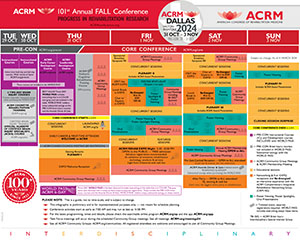Aging Research & Geriatric Rehabilitation
Athlete Development & Sports Rehabilitation
Clinical Practice
Relationship Between Approximate Shapes of Atrophic and Small Angular Fibers and Muscle Fiber Cross-sectional Areas in Disuse Muscle Atrophy
Sunday, November 3, 2024
9:30 AM - 10:30 AM
Location: ROOM: Chantilly Foyer REGION: Tower Lobby Level >>> DIRECTIONS: From the ACRM Registration desk, proceed towards the elephants. The Chantilly Foyer is immediately behind the elephants.

Katsuhito Nagano (Hisano), Ph.D, RPT
Professor
Tsukuba International University
Tsuchiura, Ibaraki, Japan
Presenting Author(s)
Research Objectives: Muscle fiber (MF) cross-sectional area (CSA) and muscle strength are reduced in disuse muscle atrophy (DMA). However, whether approximate shapes of MF cross-section (AS-MFCS) are altered in DMA remains unknown. This study aimed to clarify the relationship between approximate shapes of atrophic and small angular fibers and muscle fiber cross-sectional areas in disuse muscle atrophy, and to develop methods for diseases differentiation and effective rehabilitation.
Design: Randomized controlled trial study
Setting: Laboratory animals
Participants: 1000 myofibers in soleus muscles of 11-week-old male Wistar rats
Interventions: This study was conducted in accordance with the International Guiding Principles for Biomedical Research Involving Animals. The study was approved by the Ethics Committee for Human Experiments of the Nittazuka Medical Welfare Center (registration number 26-5).
Soleus muscles of ten 11-week-old male Wistar rats were collected as samples. Muscle samples were rapid-frozen in isopentane—cooled in dry ice and acetone and sliced into 10-μm slices in a cryostat, then stained with hematoxylin–eosin. The NIH-ImageJ software was used to analyze the number of corners that were counted according to the proposed criteria (3) and myofiber cross-sectional area (CSA) of 1000 myofibers.
Main Outcome Measures: The relationship between approximate shapes of atrophic and small angular fibers and muscle fiber cross-sectional areas in disuse muscle atrophy.
Results: The CSA of atrophic fibers in the SNT group decreased to approximately 50% of that of muscle fibers in the CON group. AS-MFCS in the CON and SNT groups were characterized by 5.6 ± 0.9 and 5.5 ± 0.9 vertices, respectively, with no significant differences. The proportion of 5–6 gonal muscle fibers accounted for 77% of the total fibers. The correlation between CSA and AS-MFCS was weak in both groups. The number of small angular fibers in the SNT group was significantly higher; however, CSA did not differ significantly between the two groups. AS-MFCS did not correlate with CSA in both groups.
Conclusions: These results revealed that CSA decreased at an early stage in the SNT group without major changes in the percentages of AS-MFCS. Moreover, the number of small angular fibers increased in the SNT group; however, the results suggest that effects on the number of vertices were minor at this stage. DMA in early stage can be distinguished from other neuromuscular diseases by angle count and can be used as an indicator of the recovery process and progress of rehabilitation.
Author(s) Disclosures: The authors have no financial conflicts of interest disclose concerning the study.
Design: Randomized controlled trial study
Setting: Laboratory animals
Participants: 1000 myofibers in soleus muscles of 11-week-old male Wistar rats
Interventions: This study was conducted in accordance with the International Guiding Principles for Biomedical Research Involving Animals. The study was approved by the Ethics Committee for Human Experiments of the Nittazuka Medical Welfare Center (registration number 26-5).
Soleus muscles of ten 11-week-old male Wistar rats were collected as samples. Muscle samples were rapid-frozen in isopentane—cooled in dry ice and acetone and sliced into 10-μm slices in a cryostat, then stained with hematoxylin–eosin. The NIH-ImageJ software was used to analyze the number of corners that were counted according to the proposed criteria (3) and myofiber cross-sectional area (CSA) of 1000 myofibers.
Main Outcome Measures: The relationship between approximate shapes of atrophic and small angular fibers and muscle fiber cross-sectional areas in disuse muscle atrophy.
Results: The CSA of atrophic fibers in the SNT group decreased to approximately 50% of that of muscle fibers in the CON group. AS-MFCS in the CON and SNT groups were characterized by 5.6 ± 0.9 and 5.5 ± 0.9 vertices, respectively, with no significant differences. The proportion of 5–6 gonal muscle fibers accounted for 77% of the total fibers. The correlation between CSA and AS-MFCS was weak in both groups. The number of small angular fibers in the SNT group was significantly higher; however, CSA did not differ significantly between the two groups. AS-MFCS did not correlate with CSA in both groups.
Conclusions: These results revealed that CSA decreased at an early stage in the SNT group without major changes in the percentages of AS-MFCS. Moreover, the number of small angular fibers increased in the SNT group; however, the results suggest that effects on the number of vertices were minor at this stage. DMA in early stage can be distinguished from other neuromuscular diseases by angle count and can be used as an indicator of the recovery process and progress of rehabilitation.
Author(s) Disclosures: The authors have no financial conflicts of interest disclose concerning the study.
Learning Objectives:
- Upon completion, participants will be able to understand the morphology of disuse muscle atrophy.
- Upon completion, participants will be able to understand the difference approximate shapes of atrophic and small angular fibers.
- Upon completion, participants will be able to understand the relationship between approximate shapes of atrophic and small angular fibers and muscle fiber cross-sectional areas.

.jpg)
.jpg)
.jpg)
